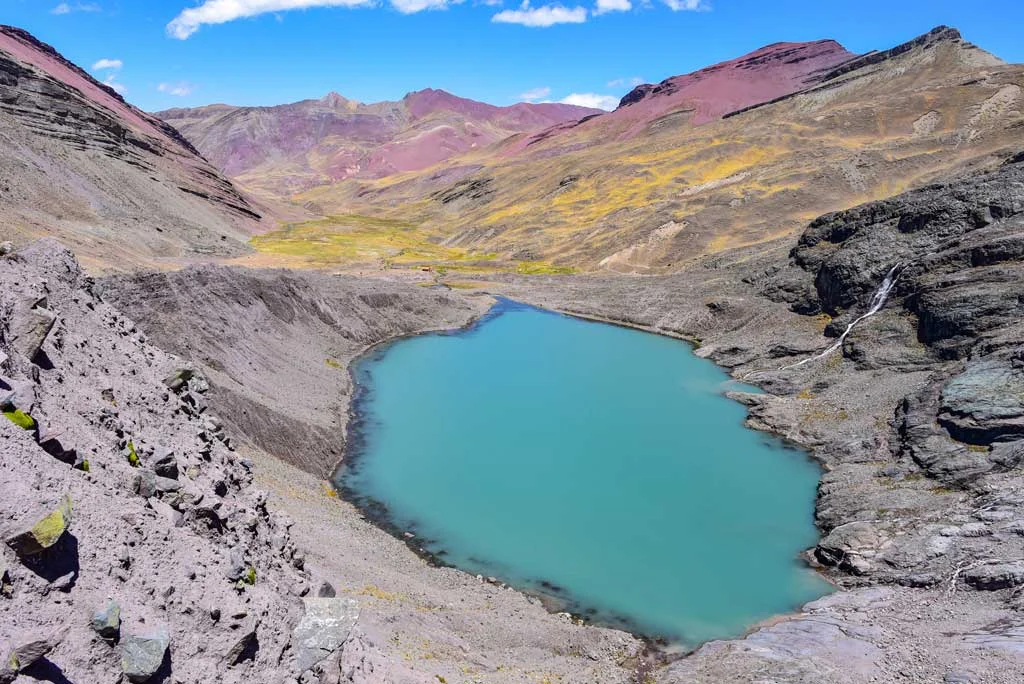The Ausangate trek, another off-the-beaten-path trek, is said to be the shortest trek to Machu Picchu. It is a circuit trek that goes around the dominant peak in the Cordillera Vilcanota mountain range–the Ausangate Mountain.
The locals call it “Apus” since they consider it a most sacred peak. A small church is found high up on this mountain and has seen pilgrimages during the annual Qoyllority festival.
Highlights of the Ausangate Trek:
- Stunning views of the valleys, waterfalls, and glacier peaks
- Encountering ice formation on Ausangate’s north face
- Camping right beneath the seracs and crevasses of the glaciers
- The turquoise waters of the Ausangatecocha (Ausangate Lake)
- Majestic views of the triple-summits (Nevado Pico Tres) of Jatun Punta, Puca Punta, and Collque Cruz
- Sightings of Andean flora and fauna
Notable Stops/Destinations
Upis – a village at the foot of the Ausangate Mountain that is the first campsite of an Ausangate trek; home to weavers who are impeccable artisans
Pacchanta – a community known for its traditional weaving, traditional farming, and natural hot springs
Queullacocha Valley – one of the trail stops that showcase rocky crags, waterfalls, and lakes that are home to a variety of bird species
Palomani Pass – the highest point of the Ausangate trek
Tinki – (Tinqui) is a small village that serves as the trailhead to Ausangate
Soraypampa – serves as a base camp for various treks in Peru
Lake Yanacocha (Black Water) – the lake’s dark waters are due to the presence of volcanic soils
Lake Sibinacocha – ranked as the 22nd highest lake in the world at approximately 4,873 meters above sea level and drains into the Amazon River
Modes of Travel:
Trekking, bus, train
It is important to remember that trek stops vary, depending on the itinerary of your chosen trek operator. Some Ausangate treks are combined with a hike to Rainbow Mountain.

